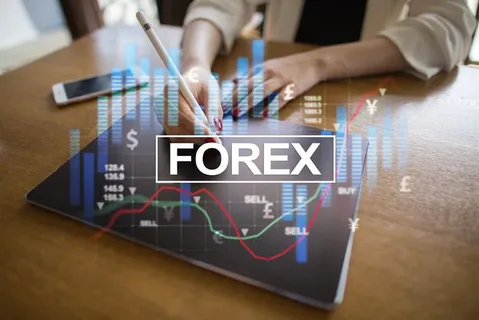How to Trade Forex Successfully: Tips and Strategies
Trading in foreign currencies is known as forex trading, and more people are turning to it as a means by which they can invest and boost their capital. Since this market operates around the clock, has a high turnover rate, and offers the possibility of earning money, Forex trading can interest everyone ready to study. However, you need knowledge, time, and the best strategies to trade Forex successfully. In this article, I will provide tips on Forex trading to help people trade Forex successfully.
Understanding the Basics of Forex Trading
Before going further into the tips and strategies, the fundamental principles of Forex trading must be under a trader’s belt. Trading on Forex is buying one currency for the other in the expectation of making a profit out of the differential rates of the two currencies. It is worth noticing that currencies are traded in pairs (for example, EUR/USD or GBP/JPY; where the first currency is a base currency, and the second is a quote currency. Forex trading aims to buy a currency pair when you think the base currency will rise in value and sell the pair when you think the base currency will likely fall in value.
The Forex market is open twenty-four hours a day, five days a week. Because it is not a central market, trading is done over the counter through the various world markets of banks, institutions, and brokers. As mentioned earlier, Forex is a decentralized market that is highly liquid, and there are enough opportunities for traders.
Choosing the Right Forex Broker
Selecting a Forex broker is the first step to ensuring the success of Forex trading. Numerous brokers are available in the Forex market to help you trade, so you should choose the right one. It is advisable to work with brokerage companies that act as members of the financial authorities, have attractive spreads, and offer good trading terminals.
Among these factors are the currency pairs offered by the broker, leverage, and customer support. A broker with many options concerning currency pairs and high leverage would provide more trading opportunities but not exaggerate with leverage, as it increases profits and losses.
Mastering Risk Management
Without proper risk management, most traders will lose much money while trading in the Forex market. Forex is a very sensitive market, and prices change quickly. When risk is not well controlled, it can lead to more losses. In all of these areas, traders should consider the following measures to reduce risk as much as possible:
First and foremost, never put more than a small part of your trading capital into a single trade. This means you can trade with smaller amounts of capital when the trade is opposite to what you want. The other way of managing risks is through applying stop-loss orders. A stop-loss order is a type of order that closes a trade once the price aches a certain level, thereby restricting possible losses.
Last, spread the many trades you make by not risking all the capital into a certain currency pair. That means you trade several pairs at once, minimizing the potential loss if one of the trades goes wrong.
Developing a Trading Plan
For the forex trader to succeed, he or she must have a trading plan that he or she will use. A trading plan is a document that identifies and expounds on the trader’s trading objectives, a spectrum of risks that he or she is willing to undertake, styles of trading, and specific parameters for entering and exiting trades. With a trading plan, you do not make ad-hoc decisions and can trade with a lot of discipline.
Your trading plan should also contain a schedule you will use to assess its performance. Books & Courses Employee Benefits Plan Sample Form Examining your trades on a daily, weekly, or monthly basis and examining what was profitable and what wasn’t will assist in improving your trade plan and making you a better trader in the long run.
Understanding Technical Analysis
Usually, technical analysis is an important part of Forex trading, and once you get good at this, you can trade Forex successfully. The technical analysis reflects on the subsequent relationship based on past performance price patterns. The mathematical relationship of these patterns assists traders in making a good prognosis about the price evolution.
Certain general charting techniques involve moving averages and trends and data spectacles such as Relative strength index (RSI), Bollinger Bands, and others. With these tools, one can identify trends, reversal points, and probable entry and exit points in the trade. Experts in Forex trading always use a technical approach to identify trends in the market relating to currency exchange.
Utilizing Fundamental Analysis
Technologic analysis, therefore, deals with price charts, while fundamental analysis studies the factors that can affect the price of currencies in the foreign exchange. Interest rates, inflation, employment rates, and any existing index all form part of the key factors that influence the value of a given currency.
For instance, if the central bank of a particular country increases its interest rates, the odds are that the country’s currency will appreciate as investors from other countries import the maturing bonds. Political instability or a negative economic outlook would be expected to result in a weaker currency. Both technical and fundamental analysis are employed at high levels to get the big picture of the market and trading.
Emphasizing Discipline and Patience
Two of the most famous characteristics advisable by Forex traders are discipline and patience. Forex trading is fraught with difficult moments of psych emotional stress because the market is frequently against you. One has to avoid the temptation of ejected emotions by following the outlined trading plan regardless of the result.
You should also avoid adding to your trades or chasing your losses by putting up more capital than necessary on your positions. It also takes time to make great trades because these do not occur daily. A competent trader patiently waits for the right markets with the right market setups and doesn’t take trades when they are not visible. Remember that consistency is the name of the game for any trader to succeed in the Forex trading business in the long run.
Leveraging the Power of Leverage Wisely
Using leverage is important in managing a small amount of capital since it enables the trader to manage large positions with little cash. As you may recall from previous lessons, trading on margin can boost your profit, but the same boosts your loss. A common pit that inexperienced traders fall into is leveraging their trading capital incorrectly, a way that sees their entire trading capital disappear with a few disappointments.
Many traders learn the lessons of leverage in forex trading to apply the idea appropriately. Never leave your leveraged ratio to your broker, and adapt the actual size of your position to the same. You can avoid substantial account loss by using leverage appropriately and managing your exposure properly.
Staying Informed About Market News
Forex trading involves knowing the current economic incidences worldwide and the market trends. This is because the prices of currencies are usually influenced by current economic data and indicators, the central bank’s monetary policy, and geopolitical events. This way, you can be ready to face market movements and make correct trading decisions.
Most Forex traders have their economic calendars to monitor certain decisions, such as interest rates, employment numbers, and inflation rates. Such occurrences assume some level of change in the market and give traders both risks and opportunities.
Continuing Education and Practice
Last but not least, analyzing the factors essential to successful Forex trades is a process that goes on and on. The Forex market changes with time, and therefore, the trader must embrace new approaches, instruments, and trends in the market. Some suggested actions might include reading the books, attending webinars, or following the Forex blogs of professionals or experts.
This is all the more important for trading, as practice is the key to enhancing different skills. Most brokers provide demo accounts, where you can trade using fake money but are positioned in the real market. Additional or demo accounts offer an excellent opportunity to develop certain strategies without using real capital. This way, you will earn more profits over time, and the trades will become more successful.
Conclusion
To trade Forex, you need to have some sort of knowledge, be disciplined, and also have an effective trading plan that you will employ. You can lay the foundation by knowing how to trade Forex, perfecting your risk control, and having a definite trading strategy. Combining analytical technologies and fundamental approaches will give a balanced market view. Timing is important – do not let greed win over; leverage should not be seen as a mere instrument of use but should be used appropriately; there is always room for growth, and no better classroom exists than the real market. You do not have to rush into or out of the Forex market; this market, like any other, needs the exercise of time and effort for one to reap big.



